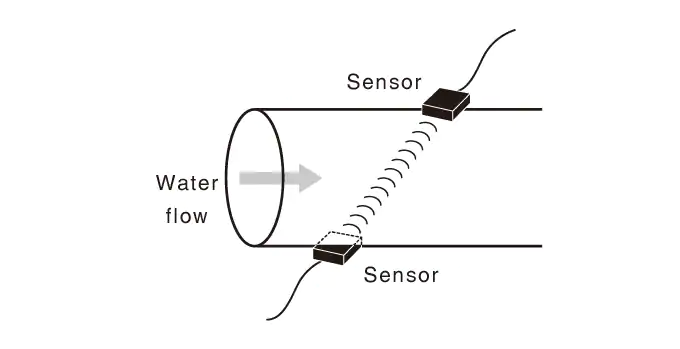How Ultrasonic Flow Meters are Revolutionizing Industrial Processes
In the realm of industrial process management, the evolution of flow measurement technology has been pivotal. Among the various advancements, non-contact ultrasonic flow measurement stands out as a revolutionary development. As a seasoned industry specialist in ultrasonic clamp-on flow metering technology, I’ve seen how this innovation has reshaped the approach to flow measurement in numerous industries.
The Principle of Non-Contact Ultrasonic Flow Measurement
Non-contact ultrasonic flow meters utilize sound waves to measure the velocity of a fluid flowing through a pipe. These meters employ ultrasonic transducers, which are mounted on the exterior of the pipe, thus eliminating the need for any direct contact with the fluid. The transducers emit ultrasonic pulses that traverse the fluid and are reflected back. The flow rate is then calculated based on the time it takes for these sound waves to travel upstream and downstream.

Advantages in Industrial Applications
The non-invasive nature of these meters offers substantial benefits:
- Ease of Installation and Maintenance: Since there’s no need to cut pipes or disrupt the process flow, installation is straightforward and cost-effective. This aspect is particularly beneficial in industries where system downtime is a critical concern.
- Versatility: Non-contact ultrasonic flow meters can be used with a wide range of liquids, including corrosive, abrasive, or very pure fluids. They are suitable for various pipe materials and diameters, making them a versatile choice for different industrial settings.
- Accuracy and Reliability: These meters provide highly accurate measurements, essential for process control and quality assurance. They are reliable over a broad range of flow rates and conditions, ensuring consistent performance.
- Safety and Hygiene: In industries where product purity is paramount, such as pharmaceuticals or food and beverage, the non-contact nature ensures no risk of contamination.
Impact on Industrial Processes
The integration of non-contact ultrasonic flow meters into industrial processes has led to significant improvements:
- Enhanced Process Efficiency: Accurate flow measurement allows for better control and optimization of processes, leading to increased efficiency and reduced waste.
- Cost Reduction: The reduction in installation and maintenance costs, coupled with improved process efficiency, translates into substantial cost savings.
- Environmental Sustainability: By optimizing flow rates and reducing waste, these meters contribute to more environmentally sustainable industrial practices.
- Data Integration: Modern ultrasonic flow meters can be integrated into digital monitoring systems, providing real-time data for process management and predictive maintenance.
In conclusion, non-contact ultrasonic flow measurement is not just a technological advancement; it’s a catalyst for efficiency, cost-effectiveness, and sustainability in industrial processes. As industries continue to evolve, the role of ultrasonic flow meters in enhancing process control and quality assurance will undoubtedly grow, marking a new era in industrial process management.


